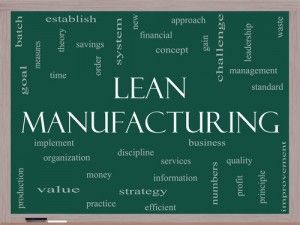By Clara Bailey
•
August 21, 2025
The Hidden Costs of Poor Courier Services Many businesses learn the hard way that choosing a courier based solely on price can be a costly mistake. Poor courier services create ripple effects that damage your reputation and bottom line. Consider Sarah, who runs a boutique jewelry business. She once used a budget courier service to deliver a custom engagement ring to a client's hotel before his proposal. The package arrived two days late, forcing the client to propose without the ring and ultimately request a full refund due to the ruined surprise. This scenario illustrates how courier failures don't just delay deliveries—they destroy customer experiences and damage relationships you've worked hard to build. The Real Impact on Your Business When courier services fail, businesses face multiple consequences: Financial losses from missed deadlines, cancelled orders, and compensation claims pile up quickly. A single delayed shipment to a corporate client can result in thousands of dollars in lost revenue. Reputation damage spreads faster than ever in our connected world. One frustrated customer sharing their negative experience on social media can reach hundreds of potential clients instantly. Operational inefficiencies develop when you constantly worry about whether packages will arrive on time. Your team wastes valuable hours tracking shipments, fielding customer complaints, and managing crisis situations. Competitive disadvantage emerges when rivals consistently deliver faster and more reliably than you do. Customers increasingly expect rapid, dependable service as the new standard. What Makes a Courier Service Truly Great Great courier services share specific characteristics that set them apart from mediocre providers. Understanding these qualities helps you identify the right partner for your business needs. Reliability and Consistency A great courier service delivers on promises consistently. They don't just meet deadlines occasionally; they build systems and processes that ensure reliable performance day after day. Take the example of MedTech Solutions, a medical equipment supplier that requires same-day delivery of replacement parts to hospitals. Their courier partner maintains a 99.8% on-time delivery rate because they understand that delays in this industry can be matters of life and death. This level of reliability comes from robust logistics networks, redundant delivery routes, and proactive communication systems that identify and solve problems before they affect customers. Advanced Tracking and Communication Modern businesses need real-time visibility into their shipments. Great courier services provide sophisticated tracking systems that let you and your customers know exactly where packages are at any moment. These systems go beyond basic location tracking. They provide estimated delivery windows, alert you to potential delays, and offer multiple communication channels for updates and changes. Flexibility and Customization Every business has unique requirements, and great couriers adapt their services accordingly. Whether you need temperature-controlled transport, specialized handling for fragile items, or custom delivery schedules, the right partner accommodates your specific needs. A pharmaceutical company might require chain-of-custody documentation and refrigerated transport, while a law firm needs secure handling and signature confirmation for legal documents. Great couriers understand these nuances and tailor their services appropriately. Real-World Scenarios Where Great Couriers Shine Understanding the practical situations where courier excellence matters most helps you appreciate the value of choosing the right partner. Meeting Critical Deadlines Imagine you're a marketing agency preparing for a major client presentation. The printed materials, branded merchandise, and presentation materials must arrive at the client's office by 9 AM for a board meeting that could determine your agency's future relationship with this Fortune 500 company. A mediocre courier might promise delivery but leave you anxiously checking tracking updates all morning. A great courier provides guaranteed delivery times, backup plans for traffic delays, and direct communication with the delivery team to ensure success. Handling Sensitive and Valuable Items Electronics retailers, jewelry stores, and art galleries regularly ship high-value items that require special care and security. Great courier services offer specialized handling procedures, insurance options, and chain-of-custody documentation that protects both shipper and recipient. Consider an art gallery shipping a $50,000 sculpture to a collector's home. The courier must coordinate with security systems, handle the piece with museum-quality care, and provide detailed documentation throughout the process. Only experienced, professional courier services can manage these complex requirements successfully. Enabling Same-Day and Rush Deliveries Today's customers increasingly expect immediate gratification. Great courier services excel at same-day and rush deliveries that help you meet these elevated expectations. A restaurant supply company might need emergency delivery of replacement equipment to prevent a client's kitchen from shutting down during peak dining hours. Great couriers maintain networks and resources that make these urgent requests possible, turning potential disasters into success stories. Supporting E-commerce Growth Online retailers depend heavily on delivery experiences to build customer loyalty. Great courier services understand that they represent your brand during the crucial final step of the customer journey. They provide delivery options that match customer preferences, send proactive notifications about delivery status, and handle any issues professionally to maintain your reputation. The Strategic Advantages of Great Courier Partnerships Beyond solving immediate logistics challenges, great courier partnerships provide strategic advantages that support long-term business growth. Enhanced Customer Satisfaction When packages arrive on time and in perfect condition, customers associate that positive experience with your brand. Great courier services become invisible partners in building customer loyalty and encouraging repeat business. Satisfied customers become advocates who refer others to your business. They leave positive reviews, recommend your services to colleagues, and choose your company over competitors, partly because they trust your delivery capabilities. Improved Operational Efficiency Great courier services integrate seamlessly with your business processes. They provide API connections for automated shipping label creation, bulk pricing for high-volume shippers, and dedicated account management that understands your unique requirements. This integration reduces administrative overhead, minimizes errors, and frees your team to focus on core business activities instead of logistics management. Scalability Support As your business grows, shipping volumes and complexity increase. Great courier services scale their support accordingly, offering expanded service areas, additional delivery options, and enhanced technology platforms that grow with your needs. Risk Mitigation Professional courier services carry appropriate insurance, maintain safety protocols, and provide accountability measures that protect your business from liability issues. They understand regulatory requirements for different types of shipments and ensure compliance with relevant laws and industry standards. Choosing Your Courier Partner Wisely Selecting the right courier service requires careful evaluation of multiple factors beyond price. Consider these key criteria when making your decision: Service coverage should match your delivery areas and expansion plans. Ensure your courier can serve all your current markets and has capacity for future growth. Technology capabilities must integrate with your existing systems and provide the visibility you need for effective operations management. Industry experience in your specific sector brings valuable expertise about regulatory requirements, handling procedures, and customer expectations. Financial stability ensures your courier partner will remain reliable over the long term and invest in service improvements. Customer service quality becomes crucial when issues arise or special requirements need accommodation. Transform Your Business with Power Link Courier Power Link Courier understands that your success depends on reliable, professional courier services. We've built our reputation by consistently delivering exceptional results for businesses across diverse industries. Our advanced tracking systems provide real-time visibility into every shipment. Our experienced team handles sensitive and valuable items with the utmost care. Our flexible service options adapt to your unique requirements, whether you need same-day delivery, scheduled routes, or specialized handling. Most importantly, we view ourselves as your strategic partner, not just a vendor. We take time to understand your business needs, provide proactive communication about potential issues, and continuously improve our services to support your growth. Don't let courier challenges limit your business potential. Partner with Power Link Courier and experience the difference that professional, reliable courier services can make for your success. Contact us today to discuss how we can transform your delivery operations and help you consistently exceed customer expectations. Your business deserves a courier partner that shares your commitment to excellence.
 You have been working hard all of your life for your retirement. Often, we get so focused on our long term goals that we overlook the small things we can do to improve our outlook and performance. One of the best ways to do this is incorporating the concept of lean manufacturing to improve upon and even surpass long term goals. So what is lean manufacturing anyways?
You have been working hard all of your life for your retirement. Often, we get so focused on our long term goals that we overlook the small things we can do to improve our outlook and performance. One of the best ways to do this is incorporating the concept of lean manufacturing to improve upon and even surpass long term goals. So what is lean manufacturing anyways?










